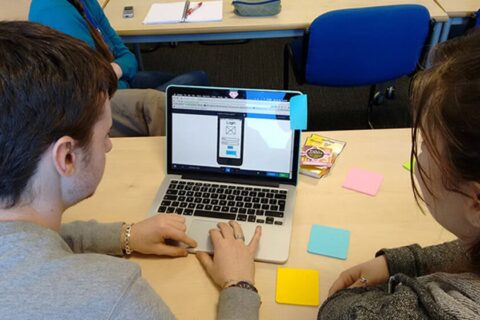Recommendation for adult educators how to work with vulnerable groups
Working with vulnerable groups as an adult educator requires a compassionate and inclusive approach that recognizes and addresses the unique needs and challenges of these individuals. Here are some recommendations for adult educators to effectively work with vulnerable groups:
- Cultivate Empathy and Respect: Approach vulnerable individuals with empathy, understanding, and respect. Recognize their strengths and treat them as capable individuals deserving of dignity.
- Create a Safe and Inclusive Environment: Foster an environment where participants feel safe, valued, and free from judgment. Address any concerns about discrimination, harassment, or stigma.
- Understand Diverse Needs: Recognize that vulnerability can manifest in various ways, such as socio-economic status, disabilities, mental health issues, or past trauma. Tailor your approach to meet the specific needs of the group.
- Build Trust: Establish trust by being consistent, reliable, and transparent. Create opportunities for open dialogue and active listening to understand participants’ concerns and aspirations.
- Flexibility in Teaching Methods: Adopt diverse teaching methods that accommodate various learning styles and abilities. Use interactive and participatory techniques that engage participants actively in the learning process.
- Individualized Support: Offer individualized support to address participants’ unique needs and challenges. This could include providing additional resources, accommodations, or one-on-one assistance.
- Cultural Sensitivity: Recognize and appreciate the cultural backgrounds of participants. Be sensitive to cultural differences and adapt your teaching approach accordingly.
- Collaboration and Participation: Involve participants in decision-making processes. Let them have a say in the curriculum, activities, and topics to make the learning experience more relevant and engaging.
- Trauma-Informed Approach: If applicable, consider adopting a trauma-informed approach that acknowledges the potential trauma experiences of vulnerable individuals and avoids triggering sensitive memories.
- Access to Support Services: Provide information about available support services such as counseling, social services, and community resources that could be beneficial for participants.
- Strength-Based Approach: Focus on participants’ strengths and potential rather than their vulnerabilities. Encourage them to identify their skills and build on them.
- Real-World Application: Link the learning to real-life situations and practical skills that participants can apply immediately to their daily lives.
- Feedback and Reflection: Encourage regular feedback from participants to adapt and improve your teaching methods. Foster a reflective environment where participants can share their thoughts on the learning process.
- Advocate for Change: Use your role as an educator to advocate for policies and practices that address the underlying issues contributing to vulnerability in the first place.
- Continuous Learning: Keep yourself informed about the latest research, best practices, and approaches for working with vulnerable groups. Continuously refine your skills to provide the best support possible.
Remember that each vulnerable group is unique, and the challenges they face may vary widely. Flexibility, compassion, and a commitment to meeting participants’ needs are key elements in effectively working with vulnerable populations as an adult educator.




